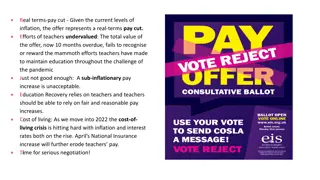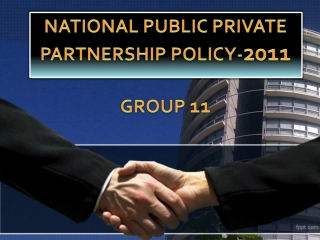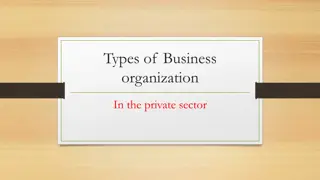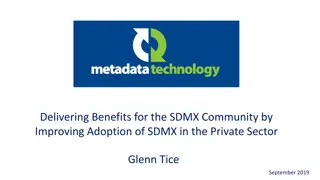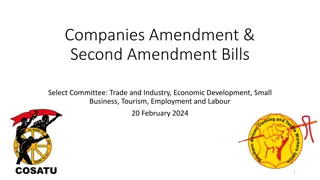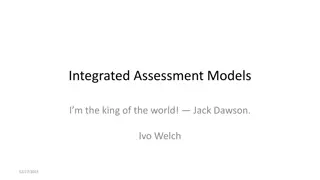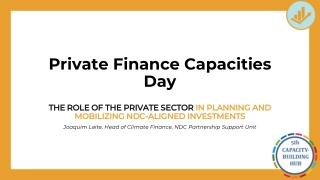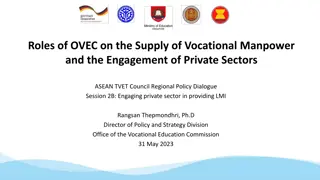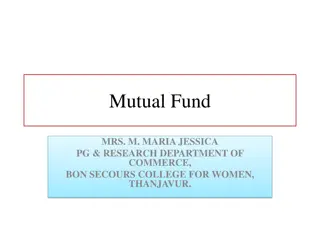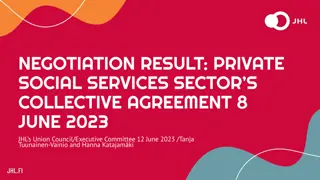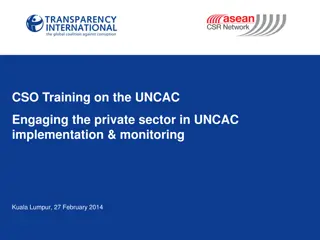Effective Strategies for Successful Negotiations in the Private Sector
Learn about the essential components of a successful negotiation approach in the private sector, including similarities with international treaty negotiations, the importance of assertiveness, adopting a win-win mindset, planning and preparation tips, assembling the right negotiation team, and involving senior decision-makers in strategy approval.
Download Presentation

Please find below an Image/Link to download the presentation.
The content on the website is provided AS IS for your information and personal use only. It may not be sold, licensed, or shared on other websites without obtaining consent from the author. Download presentation by click this link. If you encounter any issues during the download, it is possible that the publisher has removed the file from their server.
E N D
Presentation Transcript
A Private Sector Approach to Negotiations Yvette Hoskings-James
Private Sector Negotiations-Similarities with International Treaty/Convention Negotiations Complex Financial Implications Technical Issues Multiparty International/Multicultural Working to a timetable
Approach to Negotiations Unassertive: I Lose-You Win Assertive: Win-Win Aggressive: I Win-You Lose
Assertive Approach Assertive- Does not mean unfair, dishonest, unethical or aggressive Assertive - Being firm, tough, confident, focused and willing to do a deal that is in the interest of all parties Win-Win Approach achieves long lasting positive results
Assertive Approach What is your approach? Do you know your value and strengths? What do you have that the other parties value or need? What do the other parties have that you value or need? Can you identify matters which can be agreed that benefit all parties?
Planning and Preparation Planning and preparation-key part of successful negotiations Take a step back and look at different points of view What do you want to achieve? What do the other parties want to achieve? Identify common goals Identify differences What do you need to protect? What can you trade? What are your must haves? Do you have alternative plans and options if you cannot achieve your ideal outcome?
Negotiation Team Right people for the job-identify their roles Authority of team members Internal kick off meeting before start of negotiations discuss issues identify risks and consider steps/actions to manage risks ensure all team members have a good understanding of the key issues- not just their area of expertise work out your approach and strategy
Negotiation Team Need senior people/decision makers to buy into strategy/approach before start of negotiations However strategy/approach may need to change , therefore need to keep them updated on key issues and changes-so there are no surprises at the last minute
Negotiation Team-Role of the lawyer What is the role of the lawyer?
Role of the lawyer Wise counsel Negotiator Adviser (reactive/proactive) Legal Drafting Strategist Risk Analyst Risk Manager Deal maker
Negotiating the terms of the deal Be assertive Remember your strategy Communications External are you effectively communicating your points to the other parties? internal keep key people who are not part of the negotiation team regularly updated update team members if negotiations are taking place in groups
Negotiating the terms of the deal Protect your position Have a logical reason for your position Mutual problem solving what is the real issue that the other parties are concerned about? can you see a solution? Are their concerns valid (e.g. based on previous experience)?
Negotiating the terms of the deal Avoid assumptions Make sure all parties have the same understanding of the terms of the deal Does the final documented deal reflect the negotiated deal?
Discussion Various newspapers have recently reported Quamrul Chowdury s ( lead climate negotiator of the LDC Group) comments regarding the willingness of LDCs to accept commitments to reduce greenhouse case emissions: Key points: All countries should commit to reducing greenhouse gas emissions. However, the LDCs National Appropriate Mitigation Actions ( NAMAs) should be supported Although LDCs are least responsible for increasing emissions, they are ready to help cut back emissions.









